#ancestry.com
Text

The unspoken history hidden behind a surname
ByLolly Bowean
Chicago Tribune
•
Dec 26, 2017 at 8:00 am
Only the truly curious even ask.
And when a Harvard University student recently inquired about my name, she was clear that she wanted to know about my surname. She repeated it three times out loud and then began probing for something deeper.
She didn’t have to say it, but I knew she was trying to better understand my heritage and ethnic background. My surname, Bowean, is puzzling. And for some, it doesn’t match my physical presence.
When I’m in the Boston region, people ask me if it’s French and I think they are trying to determine if my heritage is Haitian. Others will ask if it’s Celtic, a question that would connect me to the Irish.
The truth is, my last name was probably supposed to be Bowen, but somewhere in the past someone misspelled it and the lives of my family clan were forever changed.
This was a common occurrence. Some Southern African-Americans struggled with literacy after emancipation, and so names took on new spellings. In other cases, white officials didn’t bother to document the correct spellings on public records and the mistakes lived on.
I learned this when I tried to research the history of my last name.
In this country, there are hundreds of Bowens.
Yet, my immediate relatives are the only people I have found with the “Bowean” last name.
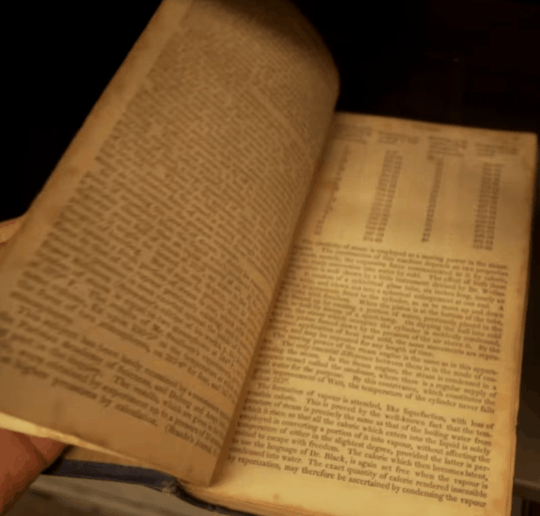
I explained this all to the young, curious student. I went on to tell her that the Bowean surname came to my people through marriage.
Before we were Boweans, we were Norwoods and Wakefields rooted in a small town in western North Carolina — near the mountains. Those names are connected back to England.
“Those are my people,” I told her.
“I know some Norwoods and some Wakefields from western North Carolina,” she piped up, almost with an instant giddy excitement. It seemed that for a moment she thought we had found common ground. I’m sure she thought that maybe we knew some of the same people.
The next sentence she almost whispered: “But they’re white.”
As we both stood in the silence, we didn’t speak about the legacy of American slavery.
Yet this is the moment when race and what it means to be African-American comes creeping into the most fleeting of encounters. It’s these unexpected confrontations with history that trigger what writer and social commentator James Baldwin called the “constant state of rage.”
I didn’t tell the student that during slavery, African-Americans were assigned names by their owners, and many times didn’t even have a surname, records show. I didn’t talk about how those residents were at times given the last name of their owner so that they could be identified as that white family’s property.
I also didn’t bother to talk about how, even after the 13th Amendment brought enslaved people a form of freedom, some chose the plantation name as their last name in order to reveal where they were from. African people held on to these names for many reasons — one being the hope to reunite with other family members who would only be able to identify them by these familiar markers.
These are the names that so many African Americans still wear.
The decision to stay bound to these names is deeply personal. I would never change my name — even if I married — mainly because it connects me to a fragmented people. It is the name that binds us together. And I hold on to hope that my relatives, disconnected long ago, can locate me through that shared legacy.
It is in these innocent moments that the troubling history of this country becomes real and the residue reveals itself as still present. I’ve never been ashamed that I am a descendant of people who were enslaved. Yet it is in subtle, seemingly innocent moments that the trauma strikes me.
I began to feel weighted as I stood staring at the college-age woman with a classic, sophisticated Latin name that means purity. I felt the weariness of being pushed into an emotional space and frustrated from having to contemplate whether to delve deeper into a topic I didn’t expect during idle small talk.
Then I remembered that this history is one we don’t like to discuss anyway. We were only making small talk.
“There’s probably a relationship between the two families,” the African-American one and the white one, I remember telling the student. “But I don’t know exactly, specifically, what it is.”
And then to be polite, we left the rest unspoken and parted ways.

#kemetic dreams#african#african culture#southern african americans#afrakan#afrakans#africans#slave names#irish#celtic#european names#ancestry#ancestry.com#african ancestry#family history#genealogy research#lineage
161 notes
·
View notes
Text

Sparkford, Somerset, UK.
Vintage postcard by Raphael Tuck & Sons Ltd. London.
Ancestral home of my Bennett Ancestors.
#Sparkford#Somerset#England#UK#Ancestors Alive!#What is Remembered Lives#Memory & Spirit of Place#Bennett#Bennett family#family history#ancestry.com#Vintage postcard#Raphael Tuck & Sons Ltd#London#Past Times#Those Were The Days
2 notes
·
View notes
Text
My Family Tree
I was playing around with Ancestry.com last night and I noticed I had some new hints. I managed to connect my lineage to someone else's family tree in Ancestry.com and have now traced my Scottish and English lineage to my 14th Great Grandfather. He was born in 1525AD. 443 years later, his first name is my middle name. And with a minor spelling variation that happened in the 1600's, we have the same last name. I also learned that my 11th Great Grandfather was named Lancelot and my 13th Great Grandfather was named Cuthebert.
Pretty cool. I am glad I didn't know this at the time my sons were born because that might have led me to make some poor naming decisions.
#personal#ancestry.com#one of my sons would probably have cuthebert as his middle name#my wife would have stopped me#Lancelot would be a cool middle name#lancelot is a family name so it's legit to have it as a middle name
12 notes
·
View notes
Text

yes
#ancestry.com#goodness gracious I spend too much time on that website#but it's soooo fun#this was the first time I'd seen it do this#and yes i would like to make my great great aunt trans thank you
23 notes
·
View notes
Text
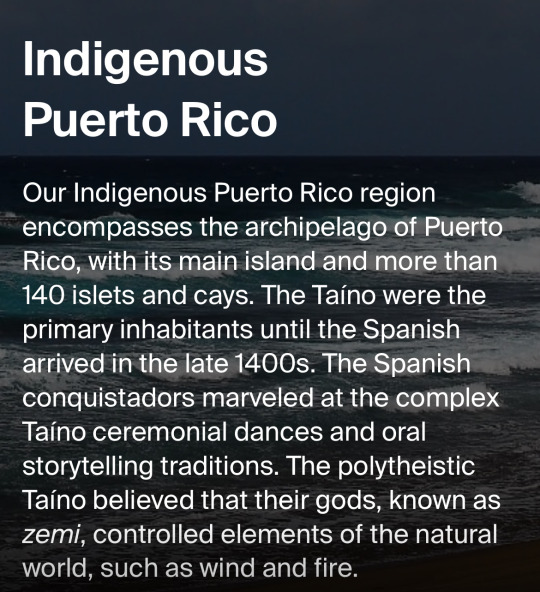
Thank you, AncestryDNA, for explaining how marvelous my ancestors were to the Spanish conquistadors. I bet they really cherished and respected them.
#I’d love to know more about my marvelous Taíno ancestors but turns out they got genocided!?!#wonder who did that#ancestry.com#ancestry dna#Taíno#colonialism
6 notes
·
View notes
Text
last night I overheard a group of 12 year old boys arguing and one of them was
"You gonna fight me like the viking you are??? Gonna f*cking take that viking ancestry, grab a boat, and sail over to my house and beat me up? Yah right dude I've got Neanderthal in me!"
I was dying inside cause now I was legit hoping they'd fight cause who wouldn't want to see a viking fight a neanderthal? But then I realized that'd look bad if another adult saw me just standing there in the corner watching two 12 y/os duking it out
#neanderthal boy was like 6 inches shorter and looked to be 90 pounds but I'd put my oney on him#viking kid was bigger but was lacking moxy#neanderthal vs viking#ancestry.com
2 notes
·
View notes
Text
How to find how you are related to other people on someone else's Ancestry.com tree that is shared with you.
I had to figure this out on my own because Ancestry.com tech support articles suck, and I thought I would share in case this comes up in search results. I know Reddit would be better for SEO, but from what I hear Redditt is not really functional right now.
Anyway:
Go to your name on the top right
Go to account settings
Go to trees (on the left side menu)
Go to trees shared with you
Click the arrow to open settings for that tree
Set “who you are in this tree”
After you do that, when you search for anyone in that tree the relationship explanation on their profile will be how they are related to you.
You can then click on that explanation and it will give you the whole chain of people
2 notes
·
View notes
Text
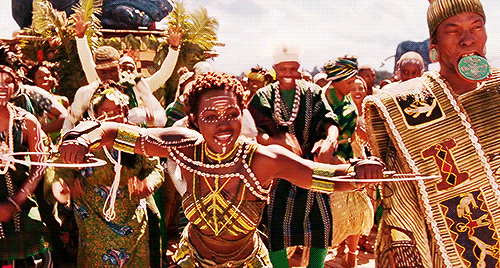
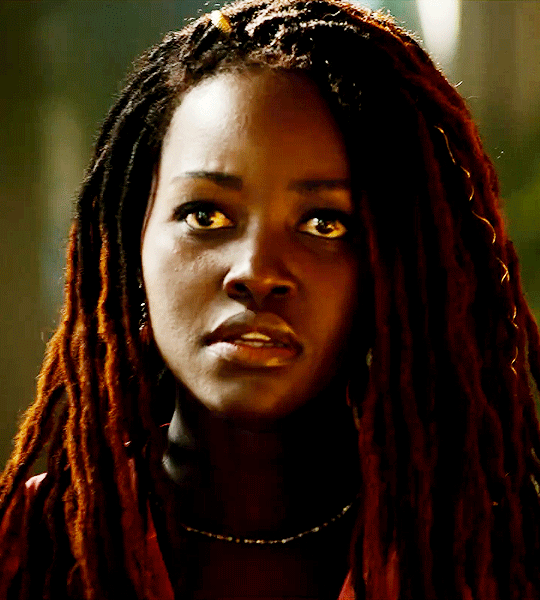
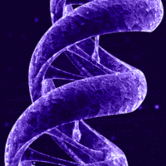

#lupita nyong'o#african#afrakan#kemetic dreams#brownskin#afrakans#africans#brown skin#african culture#afrakan spirituality#afrakan woman#deep reddish brown skin#africa#epic video#roots#finding your roots#ancestry.com#african ancestry#ancestry#Kenyan#Louis Henry gates
106 notes
·
View notes
Text
The "rules of genealogical research": Responding to Tanner's "Genealogy Star" blog

An image from a post on familytree.com titled "Long Lost Relatives from Across the Aisle"
In late December James L. Tanner wrote, on his "Genealogy Star" blogspot, about genealogical research in the age of the internet. He wrote that "fundamental rules of genealogical research" necessitate that every conclusion cite a record or document.He added that "genealogy is not something you just make up in your spare time. The whole idea is that genealogy is based on history." I write this post not to disagree with him, but to the contrary, to agree with him with a doubt.
Reprinted from my History Hermann WordPress blog and Wayback Machine. Originally posted on Jan. 10, 2018.
In the rest of Tanner's post, he notes how the "popular part of genealogy has evolved into a copycat deluge" with content of "record hints" ignored or dismissed, adding that there is "no way to purge the system of the old inaccurate information" meaning that such inaccuracies are "copied as well as the accurate information." He gives examples of the ""Family Data Collection - Deaths" collection (which was "copied from copies") , the "Family Data Collection - Births" collection (similar to the other family data collection), and the "U.S. Social Security Applications and Claims Inde[x]s, 1936-2007" (which could be "accurate, but unless the person looking at the entry goes beyond this entry, there is no way to know if the information is useful") on Ancestry.com. He ends his post by saying the following to the reader:
These are examples of the need to look carefully at the sources and to avoid copying copies. Without a general community-wide awareness of this need, we will keep getting copies of copies and preserving inaccurate information. Part of the blame for this situation lies with the individuals, but more lies with the large online companies who think they have "protected themselves" from criticism by explaining the traps but still promote the traps at the same time.
Before moving on, I'd like to respond to the above recommendations and comments. I agree that it is easy to preserve inaccurate information. However, I think it is horrible that companies like Ancestry and sites like Family Search promote bad records with inaccurate sources. So, you have to be careful with genealogical research without a doubt.
Now, let me add my two cents and personal experience.
When I originally started doing genealogy I was adding sources left and right, copying directly from family trees. These trees made it seem that the family on my mom's side descended from English royalty. I used similar information to "prove" the link from my mom's ancestors to a family of a similar name in England. However, this was all for naught: I only relied on family trees but little else. This meant I had to delete many individuals, deleting the "stinky" parts of my family tree on Ancestry.
Since then, my family tree on Ancestry has become a work in progress. I add and subtract information as needed, from time to time. I use "family trees" as a source but only when other sources are available.I recommend that one avoid other horrible sources like the "American Genealogical-Biographical Index (AGBI)", "Millennium File", "U.S. and International Marriage Records, 1560-1900" and "Web: Netherlands, GenealogieOnline Trees Index, 1000-2015" if at all possible. One of the collections looks like this:
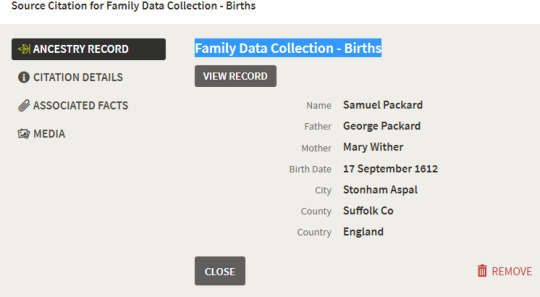
And here is an example of what the "hints" (or the green leaf on profiles) look like on Ancestry:

In this case, both of these hints are about the right person. However, I clicked "ignore" on both because the profile of his father already listed both censuses. I Just wrote "see 1850 census linked on his father's page" (and the same for 1860), adding in the information from his father's page. I did this because I don't currently have an Ancestry.com subscription, but I have information attached to pages from the time I did have a subscription.
Anyway, more to the point of Tanner's post is a biography on Cyrus Winfield Packard. I originally was going to do the entry on Samuel Packard, which is one of the earliest entries on my family tree but I mostly cite my Packed With Packards! blog (which cites original sources), so it probably isn't a good example of good sourcing. So, I present the following biography (with certain identifying of the family tree information blacked out) as an example of something for other researchers to emulate.
Here is the top half of the page:

Census records and marriage records are the mainstay of this biography, whether federal or state censuses (only some states like Massachusetts have them). There is also a peppering of vital records of Massachusetts, Find A Grave, and posts from my Packed with Packards! blog about Cyrus. Now, census records and vital records can be found on ancestry, but if you don't feel like paying for a subscription like yours truly then you can look up the same records on familysearch.org. You need to create an account now, but it is still relatively easy and a free-to-use service. This is an advantage of Family Search over Ancestry without a doubt.
Then there is the second half of the biography:

It continues in the same vein as the top half. I tried my best to source every bit of information I found. You may notice that I used photographs as a source. These come from a collection of Massachusetts Land Records at www.masslandrecords.com which you can search free and online. I was able to find a good many land records that way, which was very helpful to telling the story of Cyrus Winfield Packard. This blog is one, maybe of the first posts connecting my Packed With Packards! blog with this one.
I look forward to hearing your comments.
© 2018-2023 Burkely Hermann. All rights reserved.
3 notes
·
View notes
Text
Comparing Genealogy Platforms - Ancestry.com, 23 and Me, and What Else?
There are several genealogy platforms besides Ancestry.com, each offering a variety of tools and features, especially around DNA testing, matching, and family tree building. Here’s a comparison of the main ones:
1. MyHeritage
DNA Testing: Offers its own DNA testing kits and also allows users to upload raw DNA data from other providers (like Ancestry or 23andMe) for free.
DNA Matching: Has a…
#23andme#ancestry.com#DNA Matching#DNA testing#family tree#family tree building#Family Tree Tools#FamilySearch#Findmypast#GEDmatch#genealogy platforms#Living DNA#MyHeritage
0 notes
Text
Embark on a Scottish Knitting Adventure This October
Join a knitting tour of the Scottish Highlands in October 2024, visiting locations such as Edinburgh, Glasgow, and Loch Ness. The tour features knitting workshops on lace, mobius, and Gansey techniques, alongside weaving. Sign up for a free, real-time blo
Debora Ragland BuerkThe Write StuffLooking at life from a different point of view.
Come along with me on a Knitting Tourof the Scottish Highlands.
Scotland is renowned for its natural beauty, history and craft. Come along with me as I embark on a knitting tour of the Scottish Highlands. The tour includes
Edinburgh.
Glasgow
Oban
the Scottish Borders
Inveraray
Loch Lomond
Fort…
0 notes
Text
Biography of Thomas Garvin
Thomas is my 4G Grandfather on my paternal grandfather's side. His granddaughter would marry my great great grandfather John Francis Shovlin I. For most of my time doing family research, I have tried to find out more about him but was stymied. For the past few weeks, I was bewildered by the "hint" of a Biography attached as a story on another family tree on Ancestry. Today I finally found that biography, and I will share it in full:
Thomas Garvin was born in Ireland around 1821-1824. In a letter written by his grandson-in-law, John Gallagher, of Salem, Ohio, we are told that Thomas and two brothers were orphaned in Ireland. Neighbors took the children into their families. Thomas was taken to England where he grew to manhood. He married Bridget Sloan, either in England or Ireland. Bridget gave birth to their first child, John Girvin, in Ireland in 1844. (Irish potato famine was 1845-51)
The family returned to England and settled in Egremont, in the Whitehaven District of Cumbria. Four more children were born: Mary, Thomas, Jr., Edward, and Margaret. Thomas began work as an agricultural laborer and eventually joined other men in the ore mines nearby. He continued this work for over thirty years.
Thomas and Bridget raised their five children in the Whitehaven District of Cumbria. They moved from Egremont to nearby Cleator into a cottage down a path which led to Low Wath Mill and Weir. Here they lived out their lives. Their lives were church oriented and work centered. Their children's births and baptisms are all recorded at St. Mary's Priory in Cleator. Their children went to work at an early age which was typical for the time.
John, their eldest son, married Mary Foy at St. Mary's in 1863 (at that time called St. Bega's). They lived in one of the cottages of Low Wath as a neighbor to his parents. John and Mary had made plans to emigrate to America. At the time of their departure in 1872, they had six children. The youngest were twins and Mary was expecting their seventh. Because one of the twins was frail they left this baby, Mary Elizabeth, with John's parents, Thomas and Bridget, who raised her to age thirteen. Thomas and Bridget also helped raise another grand-daughter, Eliza, the child of their daughter, Mary.
It appears that Bridget may have had failing health at the same time Mary Elizabeth was reaching the age when she would be old enough to make the trip to join her family in America. Mary Elizabeth left her Girvin grandparents in 1884 for that reunion, and Bridget died three years later.
John was the only child of this family to emigrate. His brothers remained in the area of Egremont. Edward married, raised his family, died, and is buried at St. Mary's in Cleator. Thomas, Jr. died in an accident at a mine at age 26 just a few months before his first child was born. He, too, is buried at St. Mary's. Margaret married and lived in Low Wath, where she and her husband, John Higgins, made a home for her father, Thomas, after he was widowed and until his death in 1893. It is not known what became of their daughter, Mary, the mother of Mary Eliza.
It is fascinating to learn that this family was one which was well-rooted in the same community for over forty years. One can imagine the support that they were to one another. Church records indicate the witnesses to Sacramental events, and these witnesses were relatives of friends. We know that Thomas and Bridget must have been caring and loving grandparents to have raised two granddaughers. It is my regret to realize that there are blood lines that remain unknown and disconnected by the distance and years. Yet to my astonishment, the possibility that further research may uncover living persons descended from our Thomas and Bridget Girvin (aka Garvin) remains the impetus to continue this endeavor.
Written by Margie Brubeck, posted to Ancestry by Jean Fox, Dec 25, 2012
#Garvin#Foy#Sloan#Egremont#Ireland#orphan#Brubeck#Fox#Gallagher#family history#genealogy#research#ancestry#ancestry.com#England#UK#stories#family#history#descendency#roots
0 notes
Text
In person genealogy lecture
"Advancing with Ancestry.com" by Laura Street Chaplin will be presented in person at 1 p.m. CDT, Thursday, Aug. 22, 2024, in the Keshav Sanghani Meeting Room in the Indian Prairie Library, Darien, Illinois.
0 notes


